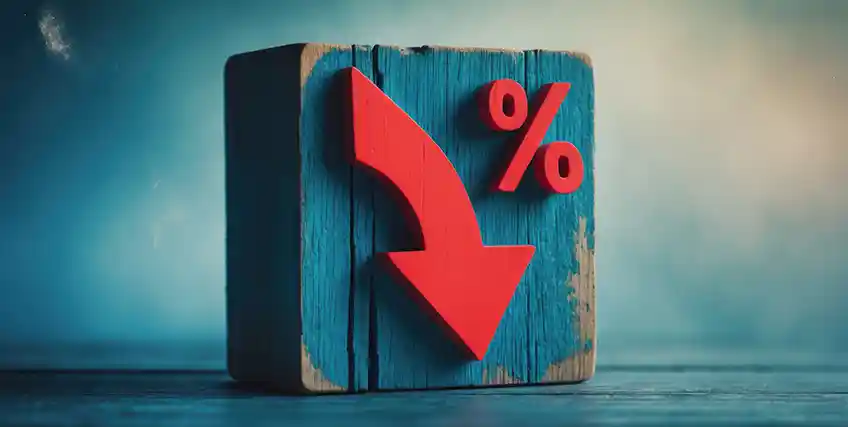How to Qualify for Lower Line of Credit Interest Rates
June 03, 2025 | Last Updated on: June 03, 2025

A line of credit interest rates can have an APR that can vary greatly. As per the Small Business Lending Survey, the average interest rate of the new line of credit in Q3 2024 was between 7.44% to 8.40% for fixed interest rate. However, it was between 8.35% to 8.57% for the variable line of credit.
In case you are a startup or a business owner who has a poor credit score, you would have to pay a higher interest rate along with the fees. However, it is always better to look for more options for the line of credit that are affordable to you, instead of going with the first option.
In this article, you will learn about the line of credit interest rates from different lenders, the factors that influence interest rates, and how to ensure you get the best rates possible.
Interest rate on a business line of credit?
The interest rate on the best line of credit rates represents the loan amount that is charged by the lender for the amount you are borrowing. The lender usually sets a credit limit, which means the maximum limit a lender will allow you to borrow at an annual percentage rate.
Although, you will only be charged on the line of credit interest rates for the money you have borrowed, not the entire limit of credit. Suppose you as a borrower, borrow $5,000 from your $50,000 available credit limit; the interest charges will only be applicable on the outstanding $5,000.
Factors influencing business line of credit interest rates
When applying for a business line of credit, several key factors influence the interest rates you'll be offered. Lenders use these to evaluate your business’s overall financial health and creditworthiness. Here’s what they typically look at:
Credit scores
Your credit score—personal and business—can greatly impact your line of credit interest rates. In general, the higher your score, the more favorable the rate. Traditional banks usually prefer a personal credit score of 670 or above. Some online lenders, however, may approve applications with scores as low as 600 or 625.
Annual revenue
Strong, steady revenue reassures lenders that you can repay the credit line. Traditional banks often look for businesses with annual income ranging from $150,000 to $250,000. Online lenders may be more flexible, accepting businesses earning $100,000 or more. Lenders may also request access to your business checking account to verify deposits and assess cash flow.
Understanding these factors can help you position your business for more competitive terms, whether you're applying for a revolving credit line with a fixed rate or a variable rate that adjusts over time.
Time in business
How long your business has been operating also plays a role. Most lenders want to see at least one to two years in the industry before issuing a line of credit. However, some alternative or online lenders may work with newer companies open for as little as six months. Businesses with a longer track record are more likely to qualify for higher limits and better rates, whether you're considering a fixed rate or a variable rate credit option.
Types of line of credit rates today
Unlike consumer lenders, the line of credit interest rates lenders charges differently, which makes it challenging when it comes to the comparison of borrowing costs. However, below are some types of interest that are charged for helping you make a wise decision on the line amount.
Interest rates
Most of the lenders show line of credit interest rates as an annual percentage rate (APR). The APR provides a complete borrowing picture of the annual borrowing cost, which also includes the fees and interest of monthly payments or minimum payments. There are some lenders that will also show simple interest, which doesn’t consist of the fee calculation.
Weekly or monthly fees
There are some lenders who will charge you weekly or monthly fees based on outstanding balances instead of interest rates. Since these interest rates don’t come with the cost of loan over the entire year and don’t include fees, they will end up costing you for more than your APR. You should review the entire cost of loan in the loan agreement and should compare with other business loans.
Factor rates
Some lenders calculate business lines of credit using factor rates instead of traditional interest rates. Unlike typical percentage-based rates, a factor rate is expressed as a decimal and multiplied by the loan amount to determine the total repayment cost. For example, if you borrow $50,000 with a factor rate of 1.2, you will repay $60,000 in total ($50,000 x 1.2), meaning the cost of borrowing the equivalent of interest would be $10,000. It’s important to note that this figure does not include any additional fees the lender may charge.
When seeking a low interest line of credit, understanding how factor rates work can help you compare offers more effectively. Also, remember that line of credit interest rates vary widely depending on your business’s financial health and the lender’s requirements. Strong financials and timely credit approval increase your chances of securing more favorable terms.
You can convert factor rates to interest rates when you compare them with other types of loans. Further, you can use that interest rate for estimating the cost of a loan if you are getting a business loan that has the same APR. There are cases where a loan with an APR is a cheap option.
Fees for line of credit interest rates
The line of credit interest rates doesn't showcase the cost of line of credit used, and the loan payment. Although there are some other fees that you may encounter:
- Annual fee: This is a flat fee, which generally is under $200, that can be charged on your business every year with automatic payments, so that your line of credit is open.
- Origination fee: In case your line of credit interest rates is also being charged with an origination fee, it will generally be a percentage of your loan amount, like 1-3%. This fee is usually charged when there is a new credit card or the opening of a new line of credit.
- Draw fee: You can also be charged a fee whenever you withdraw from a line of credit interest rates. This fee is almost equal to 3% of the total withdrawal amount.
- Maintenance fee: A lender can also charge you a maintenance fee for keeping the line of credit ongoing. You will be charged for the same, even after you are not using it after the account opening.
How to get the best business line of credit rates
In this section, you will learn about the line of credit interest rates, which are affordable and have low fees and a discount rate.
Shop around
There are multiple credit unions, banks, and online lenders who will provide you with a line of credit interest rates. But it is your task to look for the best one, for you would like to fill the application fees or pre-qualify with several lenders to see the ones providing you with the lowest competitive rates.
Build your credit scores
You must know that the higher your credit score is, the better your line of credit interest rates will be. You can build your business credit by ensuring timely payments, starting trade with the present suppliers, and keeping the debt consolidation low.
Consider a secured line of credit
Even though line of credit interest rates of this type is less appealing, lenders tend to provide this if you are willing to put an asset as collateral. The asset is the loan security and reassures the lender that they won’t be at a loss if you are unable to pay during the repayment period.
Final thoughts
Understanding how business line of credit interest rates work can help you secure more favorable terms. By comparing lenders, improving your credit score, and considering secured credit products, you can increase your chances of qualifying for low-interest equity loans.
Always review fees, APR, and terms before choosing a lender. Whether during the draw period or repayment, staying informed will ensure you maximize your credit product while keeping borrowing costs manageable.
FAQs about line of credit interest rates
What are interest rates on line of credit?
Interest-only Home Equity Lines of Credit (HELOCs) are available, depending on various factors. Your actual rate may vary based on an assessment of your credit history, combined loan-to-value (CLTV) ratio, line amount, and whether the property is owner-occupied.
Can I negotiate my line of credit interest rate?
Let the lender know that you're committed to paying off your debt and ask if you can reduce your line of credit interest rates, even temporarily. If you’ve consistently made on-time payments, you might be eligible for a lower rate simply by requesting a review of your current terms. Renegotiating your agreement could lead to more manageable payments and better overall terms, helping you pay off your balance more efficiently.
Is a line of credit a good idea?
A personal line of credit can be a flexible financing option, especially when uncertain about the amount you need to borrow. It allows you to access funds as needed while only paying interest on the amount you use. This makes it a smart way to manage borrowing costs, particularly if you want to minimize expenses tied to line of credit interest rates.
Why is it hard to get a home equity line of credit?
To qualify for a HELOC, homeowners must meet specific minimum equity requirements. Most lenders require you to have at least 15% to 20% equity in your home. This is typically calculated by subtracting your current mortgage balance from 85% of your home's market value. Meeting this equity threshold not only improves your chances of approval but may also help you secure more favorable line of credit interest rates based on your available equity and overall financial profile.
Why is line of credit interest so high?
Unsecured lines of credit generally carry higher line of credit interest rates compared to secured ones. Because they lack collateral, they can be harder to qualify for and often demand a stronger credit score. To offset the greater risk, lenders typically set lower borrowing limits and charge higher interest rates, reflecting the increased uncertainty of repayment without secured assets.
Frequent searches leading to this page
Term Loans are made by Itria Ventures LLC or Cross River Bank, Member FDIC. This is not a deposit product. California residents: Itria Ventures LLC is licensed by the Department of Financial Protection and Innovation. Loans are made or arranged pursuant to California Financing Law License # 60DBO-35839




